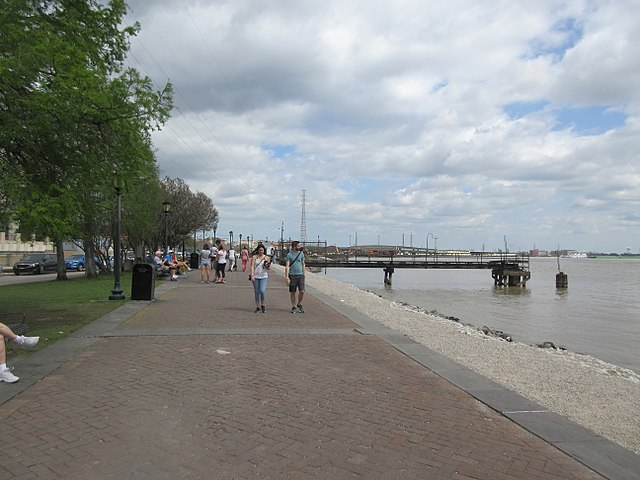
By
By mid-October, New Orleans may be without a source for municipal drinking water. The city of 390,114 people, over 57% of whom are Black, draws its tap water from the Mississippi — which, as a river that drains more than two-thirds of the entire country, rightly earning its “mighty” moniker, usually presents no issues when it comes to quantity.
But the water-treatment facilities in New Orleans may soon be drawing up nothing but seawater thanks to conditions exacerbated by climate change — making it yet another Black American city to face a major drinking-water crisis.
The summer of 2023 has not only been historically hot and dry in Louisiana, which has experienced an unprecedented fire season, but across much of the Midwest too. The drought conditions across the Mississippi Basin have caused the river to drop to near-record low water levels.
And in the Mississippi Delta, the low water flows have allowed salt water from the Gulf of Mexico to push higher and higher upstream — well above the Head of Passes, an area that sits nearly at the far southern tip of the state, where the force of the river usually keeps the salt water at bay.
The effect is known as a salt water wedge, which is a very literal phrase: a distinct column of salt water is pushing upstream along the river bed (salt water is heavier than freshwater, and thus flows below it), gradually filling more and more miles of the Mississippi that sit below sea level.
On September 25, the foot of the wedge was at river mile 69 — that’s 69 miles upstream from the Head of Passes, river mile zero — about 30 river miles away from New Orleans. In order to slow the progress of the wedge, the Army Corps of Engineers raised the height of the sill — a sort of underwater dam — that was installed in July, which will help to block some salt water from moving further upstream.
A new record for low water on the lower Mississippi is expected in the coming weeks.
The same technique has been used in the past, including in 1988 when river levels hit what was at the time a historic low — and the salt water wedge last made it as far upstream as New Orleans — and last summer, when a new record low was set. But even a higher sill will only slow the wedge, not stop it; the only thing that can do that is increasing the river flow, which requires rainfall — none of which is currently in the forecast. Instead, a new record for low water on the lower Mississippi is expected in the coming weeks.
Parts of Plaquemines Parish, which sits along the lowest stretch of the Mississippi, are already having drinking water affected. Tap water has high levels of salt in some areas, and bottled water is being distributed to the largely rural population. But just 25,000 live in the parish on the whole; if the wedge hits the far more populous Orleans parish, hundreds of thousands of people and the urban-scale water infrastructure that serves them will be affected.
The wedge could also exacerbate a problem that plagues New Orleans and other large and often largely Black American cities: lead contamination in drinking water.
The city has long-standing issues with high lead levels in its tap water — issues that, similar to Flint, Michigan, were both ignored and covered up by local elected officials. The city is working to replace the lead pipes in its water system, but many still remain, and running salt water through them could cause the metal to further corrode, leaching more lead into the water. But according to Joseph Kanter, Louisiana’s state health officer and medics director, it’s unknown whether or not that will actually happen.
In southeastern Louisiana, there has already been a run on bottled water at stores.
While the water crisis in Flint was infamously caused by government mismanagement (which resulted in criminal charges against numerous officials, including former Governor Rick Scott), more recent problems with drinking water in Black cities have been related to climate change. Late last August, the Pearl River in Jackson, Mississippi, flooded, causing one of the city’s already-damaged water treatment facilities to close completely. Some 150,000 people in Jackson, which is nearly 80% Black, were left without running water at all for a number of days, and without clean drinking water until mid-September 2022.
In southeastern Louisiana, there has already been a run on bottled water at stores, and the Army Corps is sending barge after barge full of fresh water to areas that may soon be affected — 36 million gallons every day. But the wedge has already passed the Corps’ sill, which was only able to delay its arrival in New Orleans. It seems that now all there is to do is wait: for the wedge to arrive, and, eventually, for rain.



